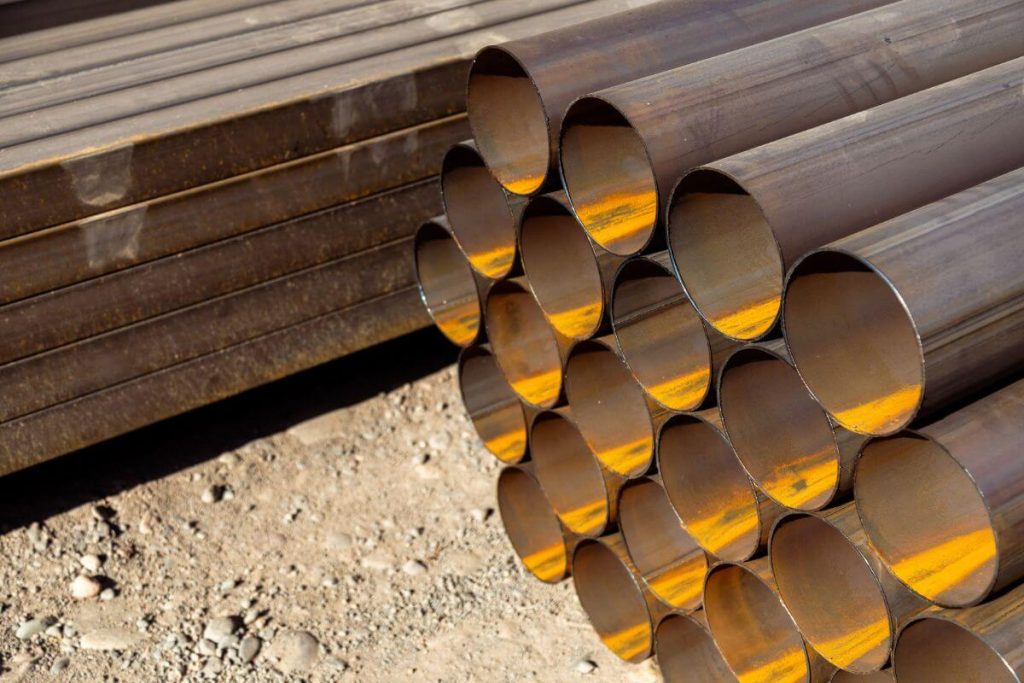What are the roles of GI pipes in urban development?
- Water supply and distribution
- Sewerage and drainage systems
- Gas distribution
- Construction materials
Overview
In the world of urban development, Galvanized Iron (GI) pipes quietly play pivotal roles. They ensure clean water delivery, resiliently manage wastewater, and even hold potential for gas distribution. As construction allies, GI pipes provide structural support, enable electrical systems, and contribute to rainwater harvesting. Their unassuming strength and corrosion resistance contribute significantly to the robustness of modern cities, where water flows uncontaminated and infrastructure stands strong.
Urban development has a profound impact on our world’s economy and the way we live. It’s the engine behind the fast-paced changes and exciting innovations that shape our lives. Because of these developments, enhancements in infrastructure have also been upgraded with the help of various kinds of steel and pipes.
The role GI pipes in urban development is not just limited to one sector of society. From delivering water to constructing vital structures, GI pipes are the unsung champions of modern cities due to their durability, strength, and corrosion resistance.
Water Supply and Distribution
Galvanized iron pipes quietly perform a crucial task – ensuring the steady flow of clean water to every nook and cranny. They are the uncelebrated champions of urban living, safeguarding the purity of the water we rely on.
These unassuming pipes owe their resilience to a protective zinc layer. This layer acts as a steadfast guardian, fending off the threats of rust and contaminants that can taint water quality. So, whether you’re hydrating at home or taking a sip from a public fountain, these pipes work diligently to deliver untainted water.
But it’s not just about cleanliness; it’s also about dependability. These pipes dutifully transport the precious resource of treated water. What’s more, they do so without burdening the city’s budget. So, as you go about your daily urban routine, bear in mind that the unsung heroes – GI pipes – are quietly ensuring the city’s water flows reliably and purely.
Sewerage and Drainage Systems
In urban developments, GI pipes find application in sewerage and drainage systems by carrying wastewater away from densely populated areas. Their durability is a crucial asset in this endeavor. The robust nature of GI pipes allows them to stand up to the harsh chemicals and corrosive elements present in wastewater. This translates into a reliable and efficient wastewater management system, safeguarding against pollution and preserving the hygiene of our urban habitats.
A key player in this strength is the protective zinc coating that encases the pipes. This coating acts as a resilient shield against the corrosive onslaught of wastewater, ensuring the pipes’ longevity and effectiveness. Thus, within the unseen passages of urban development, GI pipes work ceaselessly to maintain cleanliness and promote health.
Gas Distribution
Galvanized Iron (GI) pipes, commonly used for water supply and drainage systems, can potentially be utilized for gas distribution as well. However, several factors need careful consideration before employing them for this purpose. While the zinc coating in GI pipes offers corrosion resistance, its suitability for gas distribution depends on the type of gas, potential corrosive elements, and pressure requirements.
Gas compatibility is crucial; certain gases can react with the zinc coating, impacting both pipe integrity and gas quality. Additionally, the pressures in gas distribution systems are often higher than in water supply, necessitating pipes that can withstand these conditions.
Regulations and standards play a pivotal role in choosing appropriate materials for gas distribution. Local codes may mandate specific pipe materials due to safety concerns and long-term performance expectations. Modern gas distribution systems commonly opt for materials like steel, copper, or plastic pipes, designed explicitly to meet the demands of gas transmission.
Construction Materials
These pipes play a vital role in construction due to their strength, corrosion resistance, and versatility. They serve various purposes, such as providing structural support, scaffolding, facilitating water supply and drainage, acting as conduits for electrical systems, and even serving as fencing material.
GI pipes ensure both safety and durability in firefighting systems, while also serving decorative purposes and aiding in rainwater harvesting systems. Their flexibility extends to supporting structural frames, housing electrical wiring, and enabling efficient water distribution. Moreover, they are utilized in crafting column casings for reinforcement. With their robustness and cost-effectiveness, GI pipes significantly contribute to enhancing the reliability and longevity of construction projects.
Key Takeaway
The roles GI pipes in urban development play diverse and essential roles from water supply and drainage to gas distribution and construction. As urban areas continue to grow and evolve, these pipes remain ever-relevant, adapting to the changing needs of modern living. The careful integration of GI pipes into urban planning and development showcases their capacity to support and drive progress in multiple domains, ultimately contributing to the creation of safer, more functional, and sustainable cities for generations to come.
If you’re interested in incorporating these pipes into your next projects, you can contact us here at Supreme Pipe Corp.! With over 30 years of experience in the industry, we have established ourselves as the leading manufacturer and supplier of high-quality steel pipes.
